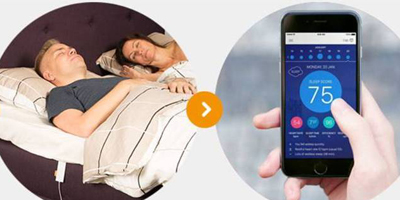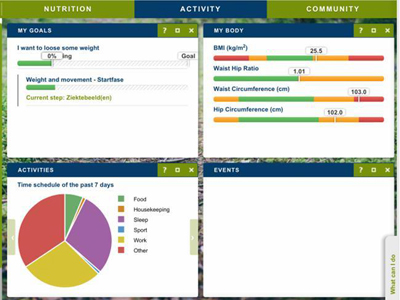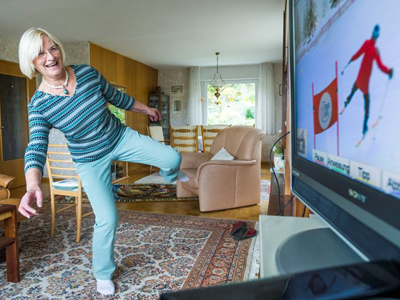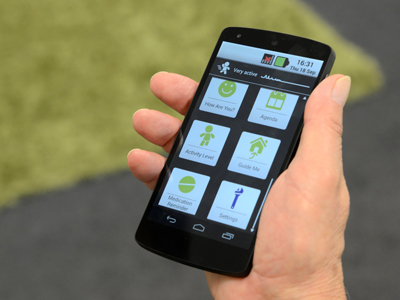Technology in use
Example data on the intermediate level are split into physiological, cognitive, motor behaviour, social behaviour, and health behaviour related indicators, which included e.g.:
- Disorientation in time and location (smartphone, meme-glasses)
- Physical activity (gait, strength, endurance, others)
- Sleep Patterns (breath, heart rate, cycles, etc.)
- Vital data (blood pressure, blood sugar, weight, others)
- EOG (facial expressions, eye-tracking, etc.)
- Speech Disorders (sighs, prosody, articulation precision,)
- Cognition (memory, attention, inhibition, etc.)
- Social Activities (personal contacts, etc.)
- Nutritional status (malnutrition and comorbidity)
- Psychological health (social activities, mood, emotions, etc.)
- Falls and Falls Risk (strength, balance, others)
On a raw data level the applied sensor infrastructure includes several wearable, smart phone, and ambient assisted living based sensors devices. Early risk monitoring will take place by collecting data with different applications assessing various functions by: neuropsychological tests; psychological tests for anxiety and depression; diabetes monitoring; physical activity assessments (gait analysis or other simple systems); sleep cycles; mood tests; cognitive activity tests and nutritional intake. This will be achieved by integrating already existing health and active ageing platforms of my-AHA consortium partners to my-AHA. In particular these underlying platforms are:
 Medisana
Medisana VitalinQ
VitalinQJINS MEME - eyewear-type bio-sensing device
JINS is the leading retail company in Japan’s eyewear industry, and JINS MEME is the world’s first sensing eyewear developed under the concept of “look inside yourself”. JINS MEME with its advantage of sitting on human face as a pair of “ordinary” glasses
1) captures eye movement by detecting electric potentials of eyes with the originally developed three-point electrooculography sensors (patented), and
2) detects body axis and movement with its accelerometer and gyroscope sensors. The detected data is sent to iOS, Android and Windows platforms via Bluetooth Low Energy so that users expectedly enjoy or even develop a wide range of services and applications. JIN is already involved in collaborative research programmes utilizing JINS MEME with University of Tohoku (Prof. Kawashima), UNITO (Prof. Rainero) and Siegen University (Prof. Grzegorzek). See more
 iStoppFalls
iStoppFalls Smart Companion
Smart Companion